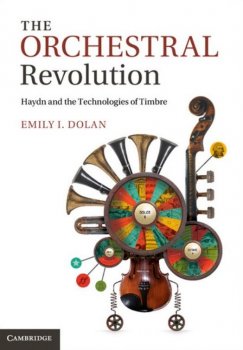The Orchestral Revolution: Haydn and the Technologies of Timbre

English | Publisher: Cambridge University Press, 2013 | PDF | 306 pages | 5 MB
The Orchestral Revolution explores the changing listening culture of the eighteenth and early nineteenth centuries. Delving into Enlightenment philosophy, the nature of instruments, compositional practices and reception history, this book describes the birth of a new form of attention to sonority and uncovers the intimate relationship between the development of modern musical aesthetics and the emergence of orchestration.
By focusing upon Joseph Haydn's innovative strategies of orchestration and tracing their reception and influence, Emily Dolan shows that the consolidation of the modern orchestra radically altered how people listened to and thought about the expressive capacity of instruments.
The orchestra transformed from a mere gathering of instruments into an ideal community full of diverse, nuanced and expressive characters. In addressing this key moment in the history of music, Dolan demonstrates the importance of the materiality of sound in the formation of the modern musical artwork.
- Offers a new account of a radical shift in European musical discourse in the late eighteenth and early nineteenth centuries, addressing a key moment in the formation of modern musical scholarship that will interest a broad scholarly audience
- Provides an analytical approach to music from the perspective of orchestration using an innovative visual method, giving readers new ways of thinking about the musical works discussed in the book as well as a way of approaching other musical repertoire
- Draws on methodologies from the history of science and technology to create connections between the history of music and other disciplines
Content:
Introduction
1. Lessons at the ocular harpsichord
2. The idea of timbre
3. Haydn, orchestration, and re-orchestration
4. The republic of sound
5. The real museum of musical works
6. The abuse of the orchestra
Epilogue: orchestral alchemy.
